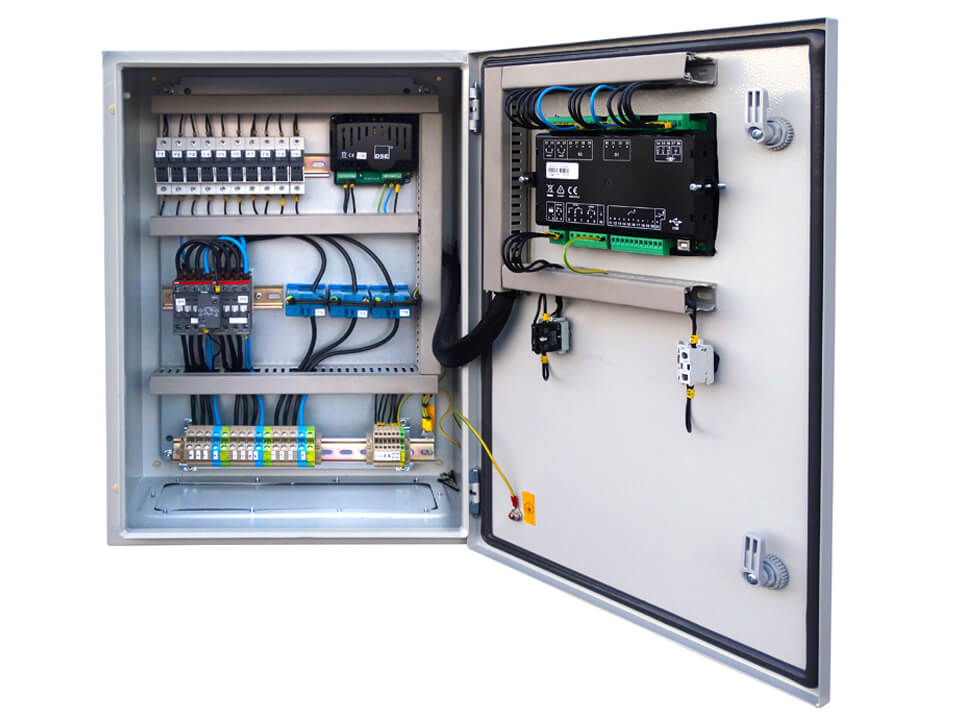When it comes to ensuring uninterrupted power supply during outages, a generator transfer switch plays a crucial role. But if you’re choosing one for your home, office, or industrial setup, you might encounter two common types — single-phase and three-phase transfer switches.
Understanding the difference between these two can save you from costly mistakes and ensure your generator operates safely and efficiently.
In this guide, we’ll break down everything you need to know about single-phase vs three-phase transfer switches, their differences, pros and cons, and which one is right for your specific needs.
What Is a Transfer Switch?
A transfer switch is an electrical device that safely switches the power source of a building or system from the main utility supply to a backup generator during power outages — and back again when the utility power returns.
Essentially, it ensures that:
Your generator and utility power never run simultaneously (preventing backfeeding).
You can power selected circuits or the entire building safely.
Your generator starts automatically (in the case of an automatic transfer switch).
There are two main types of transfer switches:
Manual Transfer Switch (MTS) – requires manual intervention.
Automatic Transfer Switch (ATS) – automatically switches between power sources.
Now, whether manual or automatic, every transfer switch can be classified as single-phase or three-phase, depending on the type of electrical system it’s connected to.
Understanding Single Phase Power
What is Single Phase Power?
Single-phase power is the most common electrical system used in residential buildings and small offices. It uses one alternating current (AC) waveform to deliver power.
Voltage: Usually 120V or 240V (depending on the region).
Wiring: Has two wires — one live (hot) and one neutral.
Power Delivery: Delivers a consistent voltage that fluctuates with the AC sine wave.
Advantages of Single Phase Power
Simpler and more affordable setup.
Ideal for light electrical loads (home appliances, lights, fans).
Easy to install and maintain.
Limitations
Not suitable for high-power applications or heavy machinery.
Power delivery isn’t as stable or efficient over long distances.
Understanding Three Phase Power
What is Three Phase Power?
Three-phase power is used in industrial, commercial, and large-scale operations. It uses three alternating currents, each offset by 120 degrees.
Voltage: Usually 208V, 400V, or 480V depending on region.
Wiring: Involves three live (hot) wires and one neutral (optional).
Power Delivery: Provides a constant and balanced flow of electricity.
Advantages of Three Phase Power
More efficient for high-power systems.
Provides smoother, more consistent energy flow.
Reduces electrical losses and power dips.
Ideal for heavy machinery and large HVAC systems.
Limitations
Higher installation cost.
Requires professional setup.
Overkill for small homes or single-family residences.
Single Phase vs Three Phase Transfer Switches: Key Differences
| Feature | Single Phase Transfer Switch | Three Phase Transfer Switch |
|---|---|---|
| Power Source | One alternating current (AC) phase | Three AC phases, 120° apart |
| Common Use | Homes, small offices, light loads | Industrial, commercial, heavy loads |
| Voltage | 120V/240V | 208V/480V |
| Number of Wires | 2 (live + neutral) | 3 live (and optional neutral) |
| Power Efficiency | Moderate | High |
| Installation Cost | Low | Higher |
| Load Capacity | Up to 10–15 kW (approx.) | Up to hundreds of kW |
| Switch Type Compatibility | Works with residential ATS/MTS | Industrial-grade ATS/MTS |
| Maintenance | Easier | Requires expertise |
| Ideal For | Homes, small generators | Factories, large facilities, commercial spaces |
How a Transfer Switch Works
Regardless of phase type, the working principle of a transfer switch remains the same:
Utility Power Available: The switch connects your electrical system to the utility grid.
Power Outage Occurs: The switch detects the failure and signals the generator to start (automatic type).
Generator Power Supplied: Once the generator stabilizes, the switch transfers the load to the generator.
Utility Power Restored: The switch shifts power back to the main utility and turns off the generator.
However, in a three-phase transfer switch, the switch must synchronize and balance all three power lines, making it more complex than a single-phase version.
Choosing Between Single Phase and Three Phase Transfer Switches
Your choice depends on power needs, setup size, and generator capacity. Below are a few guidelines:
✅ Choose a Single-Phase Transfer Switch If:
You’re powering a home or small business.
Your generator is rated below 15 kW.
Your appliances are residential-grade (fridge, lights, AC, etc.).
You want cost-effective and simple installation.
⚙️ Choose a Three-Phase Transfer Switch If:
You manage a factory, hospital, data center, or commercial complex.
You’re running large motors, HVAC units, or heavy equipment.
Your generator has a three-phase output.
You require high power efficiency and balanced load distribution.
Benefits of Using the Right Transfer Switch
1. Safety
Prevents dangerous backfeeding that can harm utility workers or damage appliances.
2. Seamless Power Supply
Automatic switches ensure smooth transitions during outages.
3. Generator Longevity
Using the correct switch ensures your generator operates within its designed electrical parameters.
4. Power Management
You can choose which circuits to power during an outage — ensuring critical equipment stays on.
Common Mistakes When Selecting a Transfer Switch
Mismatched Voltage Ratings
Always ensure the transfer switch matches your generator’s output (e.g., 240V single-phase or 480V three-phase).Incorrect Amperage Rating
The switch must handle the full load current your system demands.Neglecting Neutral and Ground Connections
Improper grounding can lead to dangerous voltage fluctuations.Ignoring Local Electrical Codes
Always comply with NEC (National Electrical Code) or local guidelines to ensure safety and insurance compliance.
Installation and Maintenance Tips
Always hire a licensed electrician for installation.
Perform regular inspections (especially contact points and wiring).
Test your automatic transfer switch at least twice a year.
Ensure the switch enclosure is weatherproof if installed outdoors.
Keep a maintenance log for industrial setups.
Cost Comparison
| Setup | Approximate Cost (INR/USD) | Includes |
|---|---|---|
| Single Phase Manual Transfer Switch | ₹10,000 – ₹25,000 ($120 – $300) | Switch + basic wiring |
| Single Phase Automatic Transfer Switch | ₹25,000 – ₹60,000 ($300 – $700) | ATS panel + installation |
| Three Phase Manual Transfer Switch | ₹40,000 – ₹80,000 ($500 – $1000) | Industrial-grade MTS |
| Three Phase Automatic Transfer Switch | ₹70,000 – ₹2,00,000+ ($900 – $2500+) | ATS + controller + enclosure |
⚠️ Prices vary depending on capacity (amperage), brand, and region.
Top Brands Offering Reliable Transfer Switches
Generac
Cummins
Kohler
Eaton
ABB
Schneider Electric
ASCO Power Technologies
These brands provide both single-phase and three-phase models with advanced features like:
Digital monitoring
Load management
Remote operation
Surge protection
Frequently Asked Questions (FAQs)
1. Can I use a three-phase transfer switch for a single-phase generator?
No. The configurations differ electrically. Always match the phase type of your generator and transfer switch.
2. What happens if I use the wrong transfer switch?
Using the wrong switch can cause imbalance, overload, or even equipment damage.
3. How often should I service my transfer switch?
Every 6–12 months for commercial units; annually for residential setups.
4. Can a transfer switch increase my generator’s lifespan?
Yes. Proper load management and switching prevent generator strain.
5. Is a transfer switch mandatory for a backup generator?
Yes. It’s essential for safety, convenience, and compliance with electrical codes.
Conclusion
Choosing between single-phase vs three-phase transfer switches depends on your power demand, generator type, and application.
For homes or small offices, a single-phase switch is ideal — affordable, simple, and reliable.
For industries, hospitals, or data centers, a three-phase switch ensures balanced, efficient, and uninterrupted power flow.
Investing in the right transfer switch means better safety, performance, and peace of mind during any power outage.




